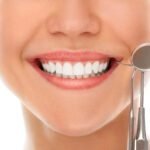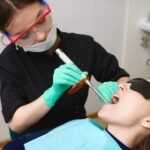Table of Contents
Understanding Oral Piercings: A Comprehensive Overview
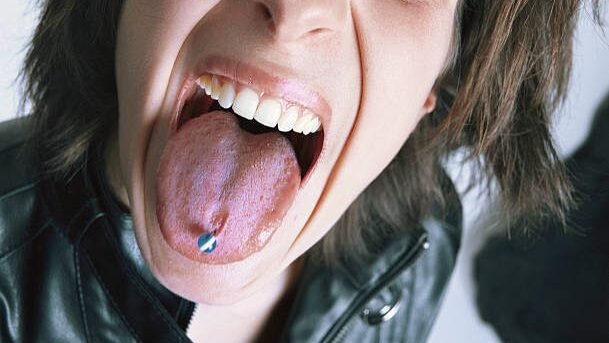
Oral piercings have become increasingly popular in recent years, especially among young adults. These piercings involve the insertion of jewelry into various parts of the mouth, such as the tongue, lips, or cheeks. While they may seem like a fashionable form of self-expression, it is important to understand the potential risks and implications associated with oral piercings.
One of the main concerns with oral piercings is the risk of infection. The mouth is home to numerous bacteria, and the introduction of a foreign object can disrupt the natural balance, leading to an increased risk of infection. In fact, studies have shown that individuals with oral piercings are more prone to bacterial and viral infections, such as gingivitis and herpes simplex virus. It is crucial to be aware of the signs and symptoms of infection, such as swelling, redness, pain, and discharge, and to seek prompt dental care if any of these occur.
Additionally, oral piercings can have detrimental effects on dental and periodontal health. The constant presence of jewelry in the mouth can cause damage to the teeth, gums, and surrounding tissues. For example, tongue piercings can lead to chipped or fractured teeth, while lip or cheek piercings can result in gum recession or damage to tooth enamel. These complications can not only be painful, but they may also require extensive dental treatment to restore oral health. It is essential to consider the potential long-term consequences before deciding to get an oral piercing.
The Anatomy of the Oral Cavity and Potential Risks
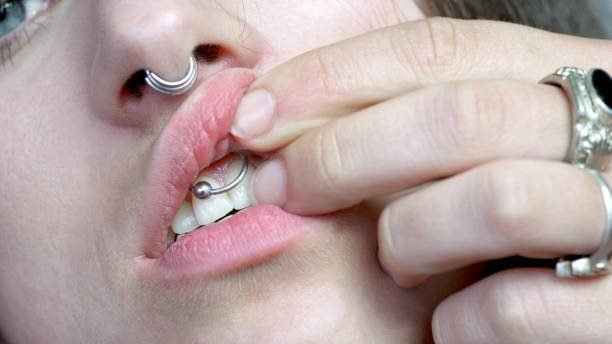
The oral cavity is a complex anatomical structure that plays a vital role in our daily lives. Made up of the lips, tongue, teeth, gums, and the surrounding tissues, understanding its intricate design is crucial for recognizing the potential risks associated with oral piercings.
One of the primary concerns with oral piercings is the effect they can have on the teeth and gums. The constant presence of metal jewelry in the mouth can lead to increased plaque and tartar buildup, which in turn can contribute to tooth decay and gum disease. Additionally, the friction between the jewelry and the oral tissues can cause abrasions and cuts, leading to potential infections and complications. It is important for individuals considering oral piercings to be aware of these risks and to take the necessary precautions to mitigate them.
Oral Piercing Infections: Recognizing the Signs and Symptoms
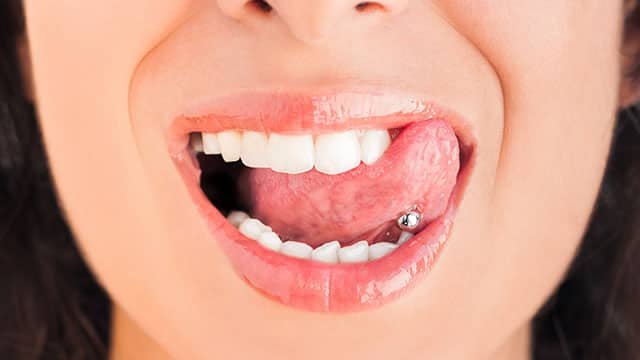
When it comes to oral piercing infections, recognizing the signs and symptoms is crucial for prompt intervention and treatment. Infections can occur in various parts of the oral cavity, including the tongue, lips, and cheek, and can manifest in different ways. One of the most common signs of an infection is persistent swelling and redness around the pierced area. This can be accompanied by pain, tenderness, and increased heat in the affected area. Additionally, it is important to be on the lookout for discharge of pus or a foul smell, as these are indications of a possible infection.
Other symptoms of an oral piercing infection include difficulty in speaking or eating due to increased sensitivity and discomfort. Some individuals may experience fever and swollen lymph nodes in the neck as the infection progresses. It is essential to note that the severity and duration of symptoms can vary from person to person, and seeking professional dental care is imperative for proper diagnosis and treatment. If you suspect an infection, do not delay in contacting your dentist or oral healthcare provider for a thorough evaluation and appropriate management.
Potential Complications of Oral Piercings: Dental and Periodontal Issues
Oral piercings have surged in popularity among today’s youth, but it’s important to consider the potential complications they can pose to dental and periodontal health. The oral cavity is a delicate ecosystem, and any disruption in this balance can lead to significant issues.
One of the primary concerns with oral piercings is the increased risk of dental damage. The constant contact between the piercing and the teeth can result in chipped or cracked enamel. The metal jewelry can also scratch and wear down tooth surfaces over time. Furthermore, accident-related injuries can occur if the piercing comes into contact with hard objects while eating or speaking. These dental issues not only compromise the appearance of one’s smile but also warrant costly and sometimes extensive dental treatment.
Periodontal health is also at risk when it comes to oral piercings. The inflammation caused by the constant presence of jewelry can lead to gum irritation and recession. This, in turn, can pave the way for bacteria to infiltrate the open tissues, leading to gum disease and potential tooth loss. Additionally, with oral piercings, there is a risk of developing an oral infection, which can spread to the surrounding soft tissues and bones if left untreated.
It is crucial for individuals considering oral piercings to consult with dental professionals who can provide comprehensive guidance on the potential consequences. Understanding the risks associated with oral piercings can empower individuals to make informed decisions and prioritize their long-term dental and periodontal health.
The Dangers of Oral Piercing Jewelry: Allergies and Injuries
Oral piercing jewelry, while it may seem trendy and fashionable, comes with its fair share of dangers and risks. One of the foremost concerns associated with oral piercing jewelry is the risk of allergies and injuries.
Many people are unaware that they may be allergic to certain metals commonly used in oral piercing jewelry, such as nickel or stainless steel. Nickel allergies are particularly common, and they can lead to uncomfortable symptoms like itching, redness, and swelling around the site of the piercing. In severe cases, a nickel allergy can cause blistering, oozing, and even the development of painful ulcers. It is important for individuals considering oral piercings to be aware of their allergies and choose jewelry made from non-allergenic materials, such as titanium or plastic.
In addition to allergies, oral piercing jewelry poses a risk of injuries. The mouth is a sensitive area with many delicate structures, including the tongue, lips, and gums. Inadequately placed or poorly designed jewelry can lead to unintended injuries, such as lacerations or punctures. These injuries can result in pain, bleeding, and an increased risk of infection. It is crucial for individuals to choose a reputable piercing professional who has experience and knowledge in proper piercing techniques to minimize the risk of injury.
Oral Piercings and Speech Impairment: Communication Challenges
Oral piercings have gained popularity among individuals seeking to express their personal style or cultural identity. However, it is important to be aware of the potential challenges that oral piercings can pose, particularly in relation to speech impairment. The placement of oral piercings, such as tongue or lip piercings, can affect one’s ability to articulate words and communicate effectively.
When a tongue piercing is present, it can alter the natural movements of the tongue, resulting in difficulties in pronouncing certain sounds or words. The piercing may interfere with the tongue’s ability to make contact with specific areas of the mouth, such as the roof or the back of the teeth, which are crucial for producing certain sounds. As a result, individuals with tongue piercings may experience speech impediments, including lisping, slurring, or difficulty with clear enunciation.
Similarly, lip piercings, especially those placed near the front of the mouth, can impede proper lip movements during speech. The presence of a lip piercing can restrict the movement of the lips, making it challenging to pronounce certain sounds that require lip-to-lip contact, such as ‘p’ or ‘b’. Moreover, the weight or size of the jewelry can cause discomfort while speaking or result in unintentional clicking or whistling sounds.
In conclusion, individuals considering oral piercings should be mindful of the potential impact on their ability to communicate effectively. Speech impairment challenges, such as lisping, slurring, or difficulty with certain sounds, can arise when oral piercings interfere with the natural movements of the tongue or lips. It is important to weigh the desire for self-expression against the potential speech-related consequences before deciding to get an oral piercing.
Oral Piercings and Oral Health: Impact on Tooth Decay and Gum Disease
Oral piercings have become increasingly popular among individuals seeking self-expression and unique body adornment. However, it is crucial to understand the impact these piercings can have on our oral health, specifically in terms of tooth decay and gum disease.
One of the primary concerns with oral piercings is the potential damage they can cause to the teeth and surrounding tissues. The constant contact between the metal jewelry and the teeth can lead to enamel erosion, which increases the risk of tooth decay. Additionally, the jewelry can contribute to the accumulation of plaque and bacteria around the piercing site, resulting in gum inflammation and potential periodontal disease.
Furthermore, the placement of oral piercings, such as on the tongue or lip, can create additional challenges for oral hygiene maintenance. Proper brushing and flossing may become more difficult, allowing plaque and bacteria to accumulate in hard-to-reach areas. This can further contribute to the development of tooth decay and gum disease. Regular visits to the dentist for professional cleanings and examinations are crucial to monitor and prevent any oral health complications associated with oral piercings.
Oral Piercing Aftercare: Proper Cleaning and Maintenance
Oral piercing aftercare is crucial to ensure proper healing and prevent complications. To maintain a clean and healthy piercing, it is important to follow a regular cleaning routine. Start by gently rinsing your mouth with a saline solution or an alcohol-free mouthwash after every meal or snack. This helps to remove any food particles or bacteria that may accumulate around the piercing site.
After rinsing, use a soft-bristle toothbrush to clean the jewelry and surrounding area. Be gentle yet thorough, paying special attention to areas where plaque can accumulate. It is recommended to use a toothpaste that is non-abrasive and free of harsh chemicals. Avoid using mouthwashes that contain alcohol, as they can irritate the piercing site and delay the healing process.
Additionally, it is important to avoid playing with or twisting the jewelry as this can introduce bacteria and prolong the healing period. Regularly check the jewelry for any signs of wear or damage, such as loose stones or broken pieces. If any issues are detected, consult with your piercer or dentist for appropriate guidance.
By following these aftercare guidelines, you can help ensure the longevity and optimal health of your oral piercing.
Oral Piercings and Oral Hygiene: Tips for Maintaining a Healthy Mouth
Maintaining good oral hygiene is crucial for everyone, but it becomes even more important when you have an oral piercing. Oral piercings can create additional challenges when it comes to keeping your mouth clean, increasing the risk of infection and other oral health problems. However, with the right care and attention, you can still maintain a healthy mouth while enjoying your oral piercing.
One key tip for oral hygiene with piercings is to be diligent about cleaning your piercing and the surrounding area. This involves using a saline solution or an antimicrobial mouth rinse recommended by your dentist to clean the area around the piercing after meals and throughout the day. Additionally, gently brushing your teeth and tongue twice a day with a soft-bristled toothbrush can help remove bacteria and plaque that can accumulate around the piercing. It is important to avoid using alcohol-based mouthwashes or harsh chemicals as they can irritate the piercing and delay the healing process. By incorporating these simple yet effective practices into your oral hygiene routine, you can help minimize the risk of infection and maintain a healthy mouth with an oral piercing.
Certainly! Here’s a table summarizing tips for maintaining oral hygiene with oral piercings along with credible sources for further reference:
| Tip | Description | Credible Source |
|---|---|---|
| Follow Aftercare Instructions | Adhere to the aftercare guidelines provided by your piercer, including cleaning routines. | Association of Professional Piercers (APP) |
| Regular Cleaning | Clean the piercing at least twice daily with a saline solution or recommended mouthwash. | American Dental Association (ADA) |
| Avoid Playing with the Piercing | Refrain from manipulating the piercing to prevent irritation and reduce infection risk. | Mayo Clinic |
| Be Cautious with Oral Activities | Avoid activities that could damage the piercing, including chewing on objects or oral contact. | Healthline |
| Watch for Signs of Infection | Monitor for symptoms such as pain, swelling, redness, or discharge, and seek medical advice. | Centers for Disease Control and Prevention (CDC) |
| Maintain Good Oral Hygiene | Continue regular oral hygiene practices, including brushing and flossing around the piercing. | British Dental Association (BDA) |
Can Oral Piercings Cause Nerve Damage? Understanding the Risks
Oral piercings have become a popular trend among individuals seeking to express their style and individuality. However, it is important to understand the potential risks associated with oral piercings, including the possibility of nerve damage. The tongue, lips, and cheeks all contain numerous delicate nerves that can be easily damaged or irritated by the presence of oral piercing jewelry.
Nerve damage caused by oral piercings can lead to a variety of issues, ranging from temporary numbness or altered sensation to more severe and permanent damage. The placement of the piercing, as well as the size and type of jewelry used, can greatly impact the risk of nerve damage. Additionally, the frequent movement and contact of oral piercings with the surrounding oral tissues can further increase the likelihood of nerve irritation or injury. It is essential to consult with a qualified dental professional before deciding to get an oral piercing, as they can provide guidance on the potential risks and offer advice on how to minimize these risks.
Oral Piercings and Orthodontic Treatment: Interference and Adjustments
Orthodontic treatment plays a crucial role in correcting misaligned teeth and improving the overall oral health of patients. However, oral piercings can pose certain challenges and interfere with the progress of orthodontic treatment. These piercings, which are often placed in the tongue, lips, or cheeks, can come into direct contact with the braces or other orthodontic appliances, leading to potential complications.
One of the primary concerns is the interference between oral piercings and braces. The metal components of braces, such as brackets and wires, can easily become entangled with the jewelry in the mouth. This can not only cause discomfort and pain but also result in damage to the orthodontic appliances. Additionally, the constant movement and pressure exerted by the piercings can disrupt the alignment process and prolong the duration of orthodontic treatment.
In some cases, orthodontic adjustments may be necessary to accommodate the presence of oral piercings. This involves making modifications to the braces or aligners to prevent them from coming into contact with the jewelry. However, even with these adjustments, there is still a risk of the piercings causing damage or hindering the progress of treatment. Therefore, it is recommended that individuals considering orthodontic treatment consult with their orthodontist about the potential implications of oral piercings and explore alternative placement options that will not interfere with treatment.
Oral Piercings and X-Rays: Safety Concerns and Recommendations
When it comes to oral piercings, safety concerns extend beyond the initial procedure and into routine dental care, including X-rays. X-rays are an essential diagnostic tool in dentistry, providing valuable insight into the health of teeth and surrounding structures. However, the presence of oral piercings can pose challenges and considerations when it comes to obtaining accurate and safe X-ray images.
Piercings in the oral cavity can create artifacts or shadows on X-rays, obscuring important details that dentists rely on to make accurate diagnoses. These artifacts can be caused by metal jewelry, such as studs or rings, obstructing the path of the X-ray beam. As a result, the dentist may not be able to accurately assess the condition of the teeth, gums, or jawbone, potentially leading to missed or delayed diagnoses of dental issues.
To mitigate these concerns, it is essential for individuals with oral piercings to inform their dentist before undergoing X-ray examinations. Dentists can then take appropriate measures, such as adjusting the angle of the X-ray beam or using alternative imaging techniques, to ensure that the images obtained are clear and free from artifacts. Additionally, temporary removal of the jewelry may be necessary in certain cases, as recommended by the dentist, to obtain the most accurate and reliable X-ray images.
By being proactive and communicating with their dental professionals, individuals with oral piercings can help ensure the safety and efficacy of their X-ray examinations. This partnership between patients and dentists is crucial in maintaining optimal oral health and achieving accurate diagnoses.
Oral Piercings and Smoking: Compounding the Risks
Smoking is a well-known detrimental habit that poses significant risks to oral health. When combined with oral piercings, these risks can be further compounded, increasing the potential for serious complications. One of the most concerning issues is the increased likelihood of infection. Smoking suppresses the immune system, making it more difficult for the body to fight off bacteria and viruses, increasing the risk of infection at the site of the oral piercing. Additionally, the oral cavity is already a vulnerable area for infection due to the abundance of bacteria and the moist environment. Smoking further weakens the body’s natural defense mechanisms, creating an even more conducive environment for infection to thrive.
Furthermore, smoking can impede the healing process of oral piercings. After a piercing, the body needs time to recover and close the wound. Smoking delays this process by reducing blood flow and oxygen levels in the oral tissues. This can lead to prolonged healing times, increased discomfort, and a higher risk of complications, such as excessive swelling, bleeding, or hypertrophic scarring. It is important for individuals considering oral piercings to understand the implications of smoking on their oral health and make informed decisions to minimize the risks involved.
Oral Piercings and Eating Habits: Potential Challenges and Solutions
Oral piercings, such as tongue, lip, or cheek piercings, can present unique challenges when it comes to eating and maintaining healthy eating habits. These piercings can significantly alter the oral cavity’s structure, affecting the way individuals eat and chew their food. The jewelry itself can also pose a risk of injury or damage to the teeth, gums, and surrounding oral tissues.
One of the main challenges faced by individuals with oral piercings is altered sensation and control while eating. The presence of a piercing, particularly in the tongue, can affect the tongue’s movement and the ability to manipulate food properly. This can result in difficulties in effective chewing and swallowing, leading to slower eating times and potential discomfort. Furthermore, the jewelry in oral piercings can pose a choking hazard if it becomes loose or dislodged while eating.
To overcome these challenges, individuals with oral piercings can implement a few solutions. Firstly, being mindful of the food choices can make a significant difference. Opting for softer foods that require less vigorous chewing can help ease discomfort and reduce the risk of damaging the jewelry or oral tissues. Additionally, cutting food into smaller, more manageable pieces can facilitate chewing and swallowing. It is also advisable to avoid excessively hot or spicy foods that may irritate the oral tissues or cause further discomfort. Finally, maintaining good oral hygiene by thoroughly cleaning the jewelry and surrounding areas after every meal is crucial to prevent any bacterial buildup or infection.
Removing Oral Piercings: Considerations and Aftereffects
When considering the removal of oral piercings, it is important to be aware of the potential aftereffects. The body perceives an oral piercing as a foreign object and responds accordingly, often by forming scar tissues around the piercing site. This scar tissue can sometimes lead to gum recession, which may result in tooth sensitivity or even tooth loss if left untreated. Furthermore, the removal of oral piercings can also cause damage to the surrounding oral structures, such as the gums, teeth, and tongue.
After the removal of an oral piercing, it is crucial to carefully monitor the healing process and maintain good oral hygiene. While the body typically heals naturally, it is important to be aware of any signs of infection, such as redness, swelling, pain, or discharge. If any of these symptoms occur, it is essential to seek immediate dental care to prevent further complications. It is also important to keep the oral cavity clean and free from bacteria during the healing process, by rinsing with a mild, non-alcoholic mouthwash or warm saltwater solution as recommended by your dentist.
Making an Informed Decision: Weighing
Oral piercings have become increasingly popular in recent years, particularly among younger individuals seeking a unique form of self-expression. However, before deciding to get an oral piercing, it is important to weigh the potential risks and complications that can arise. While it may be tempting to dive into the trend without much thought, taking the time to make an informed decision can help protect your oral health in the long run.
One of the key factors to consider when weighing the decision to get an oral piercing is the impact it can have on your overall oral health. Oral piercings create a direct pathway for bacteria to enter the oral cavity, increasing the risk of infections and other dental issues. Additionally, the presence of oral jewelry can cause damage to the teeth and gums, leading to tooth fractures, gum recession, and even tooth loss. It is crucial to recognize that these potential complications should not be taken lightly, and proper oral hygiene and regular dental check-ups become even more important with an oral piercing.
What are the potential risks of getting an oral piercing?
Potential risks of getting an oral piercing include infections, dental and periodontal issues, allergies and injuries from oral piercing jewelry, speech impairment, tooth decay and gum disease, nerve damage, interference with orthodontic treatment, safety concerns with X-rays, compounding of risks with smoking, and potential challenges with eating habits.
How can I recognize the signs and symptoms of an oral piercing infection?
Signs and symptoms of an oral piercing infection may include pain, swelling, redness, discharge of pus, fever, and difficulty in speaking or eating.
Can oral piercings cause damage to nerves in the mouth?
Yes, oral piercings can potentially cause nerve damage, leading to numbness or altered sensation in the tongue, lips, or other parts of the mouth.
Are there any specific aftercare steps I should follow for oral piercings?
Yes, proper aftercare for oral piercings includes regular cleaning with a non-alcoholic mouth rinse, avoiding alcohol, tobacco, and spicy foods, practicing good oral hygiene, and seeking immediate medical attention if any signs of infection occur.
How do oral piercings impact dental and periodontal health?
Oral piercings can lead to dental and periodontal issues, such as chipped or cracked teeth, gum recession, increased plaque accumulation, and an increased risk of tooth decay and gum disease.
Can oral piercings interfere with orthodontic treatment?
Yes, oral piercings can interfere with orthodontic treatment by causing damage to braces or other orthodontic appliances. They may also impede the movement of teeth or require adjustments to be made.
Are there any safety concerns regarding X-rays and oral piercings?
Yes, oral piercings can interfere with X-rays, making it difficult for dental professionals to obtain clear images. It is important to inform your dentist about any oral piercings prior to undergoing X-ray procedures.
How do oral piercings affect speech and communication?
Oral piercings can lead to speech impairment and communication challenges, including difficulty in pronouncing certain sounds or words.
What are some potential challenges and solutions regarding eating habits with oral piercings?
Oral piercings can present challenges with eating certain foods, especially hard or sticky ones. It is important to be cautious and make appropriate adjustments to minimize the risk of damage or discomfort while eating.
Is removing an oral piercing a complicated process?
Removing an oral piercing is generally not a complicated process if performed by a professional. However, it is important to follow proper aftercare instructions and be aware of potential aftereffects, such as scarring or closing of the piercing hole.



